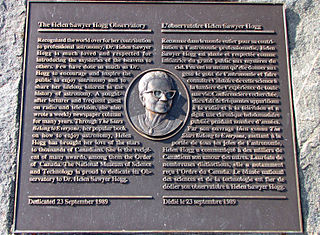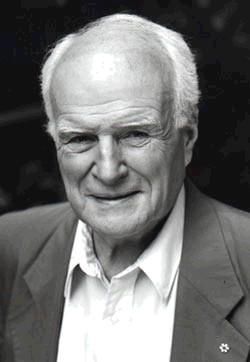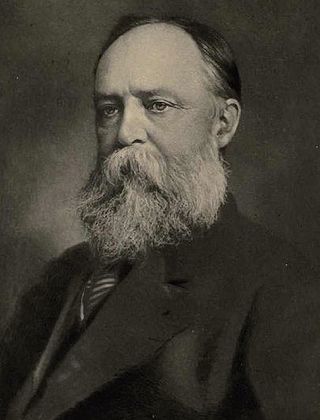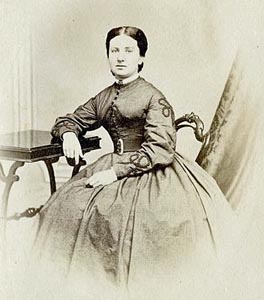Related Research Articles

Sir Sandford Fleming was a Scottish Canadian engineer and inventor. Born and raised in Scotland, he emigrated to colonial Canada at the age of 18. He promoted worldwide standard time zones, a prime meridian, and use of the 24-hour clock as key elements to communicating the accurate time, all of which influenced the creation of Coordinated Universal Time. He designed Canada's first postage stamp, produced a great deal of work in the fields of land surveying and map making, engineered much of the Intercolonial Railway and the first several hundred kilometers of the Canadian Pacific Railway, and was a founding member of the Royal Society of Canada and founder of the Canadian Institute.

Sir William Edmond Logan, FRSE FRS FGS, was a Canadian-born geologist and the founder and first director of the Geological Survey of Canada.

Helen Battles Sawyer Hogg was an American-Canadian astronomer who pioneered research into globular clusters and variable stars. She was the first female president of several astronomical organizations and a scientist when many universities would not award scientific degrees to women. Her scientific advocacy and journalism included astronomy columns in the Toronto Star and the Journal of the Royal Astronomical Society of Canada. She was considered a "great scientist and a gracious person" over a career of sixty years.

Events from the year 1872 in Canada.

The Royal Society of Canada, also known as the Academies of Arts, Humanities, and Sciences of Canada, is the senior national, bilingual council of distinguished Canadian scholars, humanists, scientists, and artists. The primary objective of the RSC is to promote learning and research in the arts, the humanities, and the sciences. The RSC is Canada's national academy and exists to promote Canadian research and scholarly accomplishment in both official languages; to recognize academic and artistic excellence; and to advise governments, non-governmental organizations, and Canadians on matters of public interest.

John Charles Polanyi is a German-born Canadian chemist. He was awarded the 1986 Nobel Prize in Chemistry for his research in chemical kinetics.

James Fraser Mustard was a Canadian doctor and renowned researcher in early childhood development. Born, raised and educated in Toronto, Ontario, Mustard began his career as a research fellow at the University of Toronto where he studied the effects of blood lipids, their relation to heart disease and how Aspirin could mitigate those effects. He published the first clinical trial showing that aspirin could prevent heart attacks and strokes. In 1966, he was one of the founding faculty members at McMaster University's newly established medical school. He was the Dean of the Faculty of Health Sciences and the medical school at McMaster University from 1972–1982. In 1982, he helped found the Canadian Institute for Advanced Research and served as its founding president, serving until 1996. He wrote several papers and studies on early childhood development, including a report used by the Ontario Government that helped create a province-wide full-day kindergarten program. He won many awards including being made a companion of the Order of Canada – the order's highest level – and was inducted into the Canadian Medical Hall of Fame. He died November 16, 2011.
Fleming College, also known as Sir Sandford Fleming College, is an Ontario College of Applied Arts and Technology located in Peterborough, Ontario, Canada. The college has an enrollment of more than 6,800 full-time and 10,000 part-time students.

The Toronto Normal School was a teachers college in Toronto, Ontario, Canada. Opened in 1847, the Normal School was located at Church and Gould streets in central Toronto, and was a predecessor to the current Ontario Institute for Studies in Education. The Royal Ontario Museum, the Ontario College of Art & Design and the Ontario Agricultural College all originated at the Normal School's campus and the provincial Department of Education was also located there. Officially named St. James Square, the school became known as "the cradle of Ontario's education system". The school's landmark Gothic-Romanesque building was designed by architects Thomas Ridout and Frederick William Cumberland in 1852. The landmark building was demolished in 1963, but architectural elements of the structure remain on the campus of Toronto Metropolitan University.

Sir Byron Edmund Walker, CVO was a Canadian banker. He was the president of the Canadian Bank of Commerce from 1907 to 1924, and a generous patron of the arts, helping to found and nurture many of Canada's cultural and educational institutions, including the University of Toronto, National Gallery of Canada, the Champlain Society, Appleby College, Art Gallery of Ontario and Royal Ontario Museum.
Hamilton Hartley Killaly was a civil engineer and political figure in Canada West.

Allan Robb Fleming was a Canadian graphic designer best known for having created the Canadian National Railway logo, designing the best-selling 1967 Centennial book Canada: A Year of the Land/Canada, du temps qui passe, and for revolutionizing the look of scholarly publishing in Canada, particularly at University of Toronto Press.
David Boyle was a Canadian blacksmith, teacher, archaeologist, musicologist, and historian.
The Galeries Ontario / Ontario Galleries (GOG), formerly Ontario Association of Art Galleries / Association Ontarienne des Galeries d’Art (OAAG/AOGA), was established in 1968 to encourage development of public art galleries, art museums, community galleries and related visual arts organizations in Ontario, Canada. It was incorporated in Ontario in 1970, and registered as a charitable organization. It is a successor organization to the Southern Ontario Gallery Group founded in 1947, renamed the Art Institute of Ontario in 1952. In December of 2020 Ontario Association of Art Galleries / Association Ontarienne des Galeries d’Art (OAAG/AOGA) rebranded to the name Galeries Ontario / Ontario Galleries (GOG) which included new brand identity, logo, and website to better serve art organizations in Ontario and Canada.
The Canadian Science and Engineering Hall of Fame, was located at the Canada Science and Technology Museum in Ottawa, Ontario, honoured Canadians who have made outstanding contributions to society in science and engineering. It also promoted role models to encourage young Canadians to pursue careers in science, engineering and technology. The hall included a permanent exhibition, a traveling exhibition, a virtual gallery, and events and programming to celebrate inductees. In 2017, the hall of fame was closed down.
The Sandford Fleming Medal was instituted in 1982 by the Royal Canadian Institute. It consists of the Sandford Fleming Medal with Citation. It is awarded annually to a Canadian who has made outstanding contributions to the public understanding of science. It is named in honour of Sandford Fleming.

Penelope Dawn (Penny) Park was a Canadian journalist and science writer.

Alicia Killaly was a Canadian watercolour painter. She was born in London, Ontario in 1836. She lived in Quebec City, Montreal and Toronto during the 1840s and 1850s. Killaly married Christopher H. Turner, a former British soldier, in 1871 and moved to England. Killaly died in 1908 in Grantham, Lincolnshire.
André Picard is a Canadian journalist and author specializing in health care issues. He works as a reporter and a columnist for the national newspaper The Globe and Mail. As of 2020, he runs the news organization's office in Montreal. He is the recipient of the 1993 Michener Award for meritorious public service journalism.
References
- 1 2 History of the Royal Canadian Institute for Science
- 1 2 "Presidents". Royal Canadian Institute for Science. Retrieved 2019-01-23.
- ↑ "Killaly, Hamilton Hartley", by Geo. Mainer, Dictionary of Canadian Biography, Vol. X (1871-1880).
- 1 2 3 The Project Gutenberg EBook of The Makers of Canada: Index and Dictionary of Canadian History, by Various 2010
- ↑ Michelle A Hamilton, Collections and Objections: Aboriginal Material Culture in Southern Ontario, Montreal: McGill-Queen's University Press, 2010; Gerald Killan, David Boyle: From Artisan to Archaeologist, Toronto: University of Toronto Press, 1983.
- ↑ Wallace, William Stewart (1949). The Royal Canadian Institute Centennial Volume, 1849-1949. The Institute.
- ↑ "Royal Canadian Institute | the Canadian Encyclopedia".
- ↑ "Finalists 2022 | Falling Walls".
- ↑ "NSERC - Media Room - Latest News - Government of Canada honours Canadians promoting a love of STEM across the country". 28 June 2016.
- ↑ "Laurentian, Science North take home award".